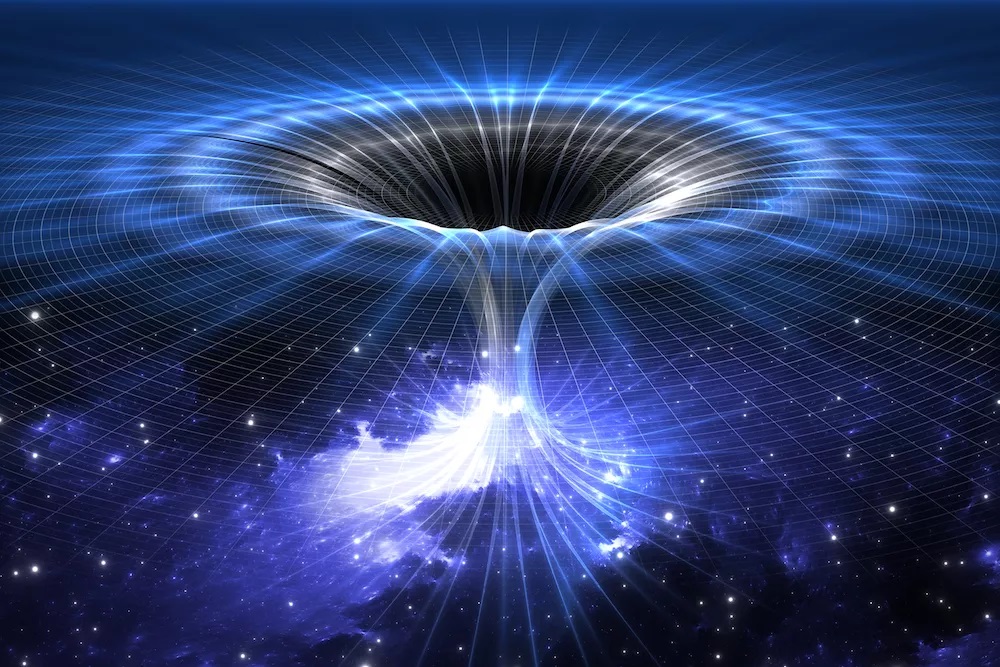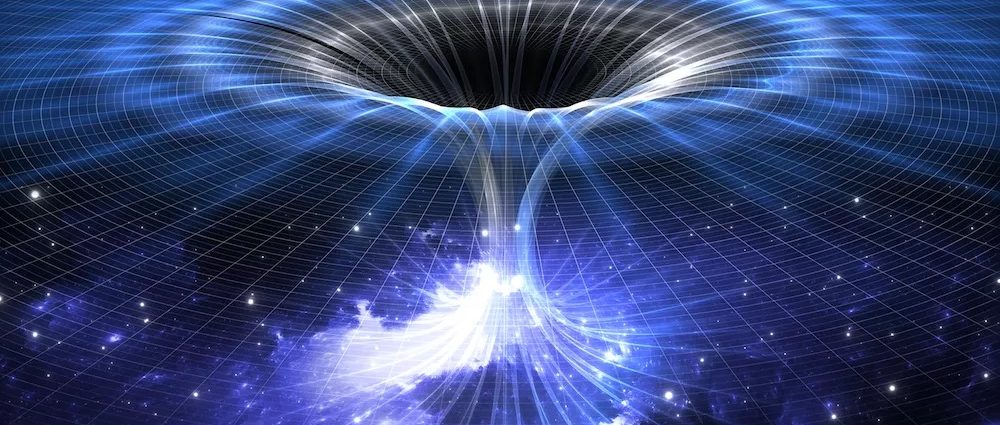
Unusual flashes of gamma rays could reveal that what appear to be giant black holes are actually huge wormholes, a new study finds.
Wormholes are tunnels in space-time that can theoretically allow travel anywhere in space and time, or even into another universe. Einstein’s theory of general relativity suggests wormholes are possible, although whether they really exist is another matter.
In many ways, wormholes resemble black holes. Both kinds of objects are extremely dense and possess extraordinarily strong gravitational pulls for bodies their size. The main difference is that no object can theoretically come back out after crossing a black hole’s event horizon — the threshold where the speed needed to escape the black hole’s gravitational pull exceeds the speed of light — whereas any body entering a wormhole could theoretically reverse course.
Assuming wormholes might exist, researchers investigated ways that one might distinguish a wormhole from a black hole. They focused on supermassive black holes with masses millions to billions of times that of the sun, which are thought to dwell at the hearts of most, if not all, galaxies. For example, at the center of our Milky Way galaxy lies Sagittarius A*, a monster black hole that is about 4.5 million solar masses in size.
Anything entering one mouth of a wormhole would exit out its other mouth. The scientists reasoned that meant that matter entering one mouth of a wormhole could potentially slam into matter entering the other mouth of the wormhole at the same time, a kind of event that would never happen with a black hole.
Any matter falling into a mouth of a supermassive wormhole would likely travel at extraordinarily high speeds due to its powerful gravitational fields. The scientists modeled the consequences of matter flowing through both mouths of a wormhole to where these mouths meet, the wormhole’s “throat.” The result of such collisions are spheres of plasma expanding out both mouths of the wormhole at nearly the speed of light, the researchers said.
“What surprises me most of all is that no one has proposed this idea before, because it is rather simple,” study lead author Mikhail Piotrovich, an astrophysicist at the Central Astronomical Observatory in Saint Petersburg, Russia, told Space.com.
The researchers compared the outbursts from such wormholes with those from a kind of supermassive black hole known as an active galactic nucleus (AGN), which can spew out more radiation than our entire galaxy does as they devour matter around them, and do so from a patch of space no larger than our solar system. AGNs are typically surrounded by rings of plasma known as accretion disks and can emit powerful jets of radiation from their poles.
The spheres of plasma from wormholes can reach temperatures of about 18 trillion degrees Fahrenheit (10 trillion degrees Celsius). At such heat, the plasma would produce gamma rays with energies of 68 million electronvolts.
In contrast, “accretion disks of AGNs don’t emit gamma radiation, because their temperature is too low for that,” Piotrovich said. Moreover, although jets from AGNs can emit gamma rays, these would mostly travel in the same direction as the jets — any traveling out in a sphere might suggest they came from a wormhole, he noted.
In addition, if an AGN resided in a kind of galaxy known as a Type I Seyfert — one in which hot gas was expanding rapidly — prior work suggested it would likely not generate many gamma rays with energies of 68 million electronvolts. If astronomers did see an AGN in a Type I Seyfert galaxy with a significant peak of such rays, that could mean that seeming AGN was actually a wormhole, the researchers said.
The scientists detailed their findings online Aug. 21 in a study accepted for publication in the journal Monthly Notices of the Royal Astronomical Society.





















